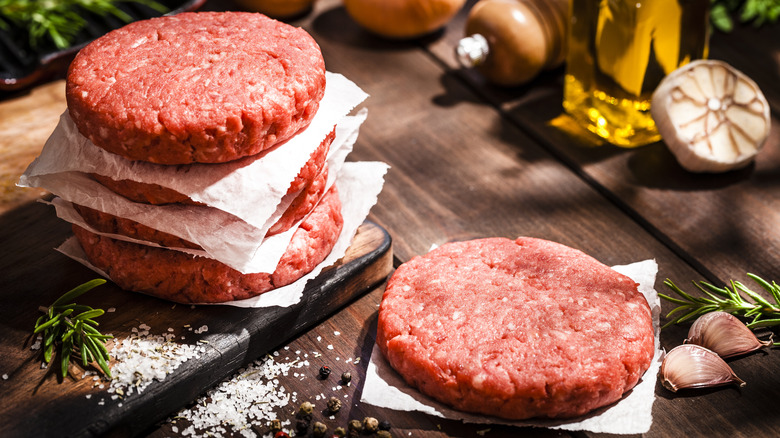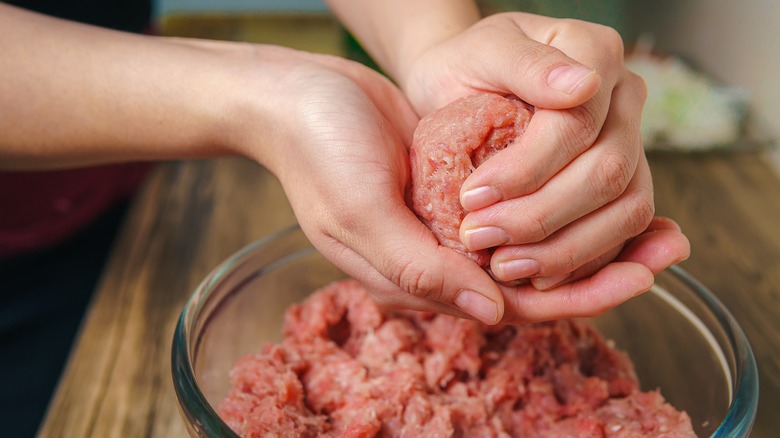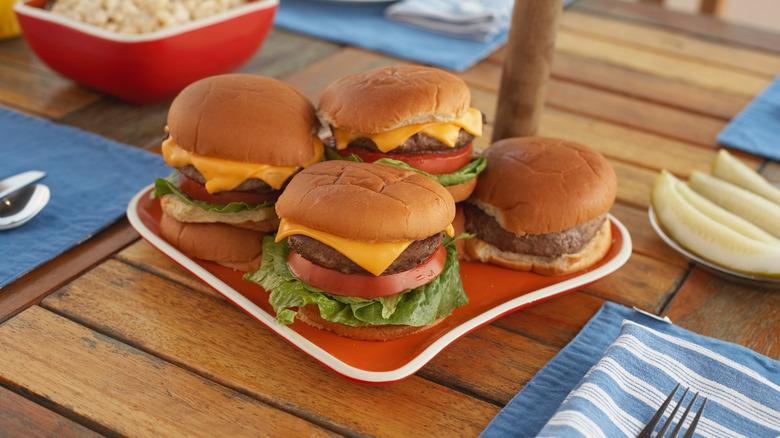Why You Should Avoid Making Perfectly Shaped, Identical Burgers
As the old saying goes, you eat with your eyes first, which means you want your recipes to look as good as they taste. When grilling out, this often means creating burger patties that are the same size and shape, which will ensure that your guests all receive a uniform amount of food. However, there's a downside to making perfectly identical burger patties, particularly regarding the quality of the finished meal.
Fat is what gives ground beef its amazing flavor in burgers and working ground beef too much can have a poor impact on the fat content of the finished burger. In addition to depleting the inherent juices and causing the meat to dry out, overworking can also diminish the flavor. That's why it's best to use a scale to measure portions of ground beef, then lightly form each portion into patties without worrying about the shape being precisely the same from burger to burger. Employing the right technique is also crucial to ensure the best possible outcome.
How to form the perfect burgers without overworking beef
Adding seasoning to ground beef is crucial for a tasty burger, but you must do so without negatively impacting the flavor and texture of the beef. To avoid a dry burger that lacks a delicious fatty flavor, add the ground beef mixture to a bowl and then add seasoning. Using your hands, fold the seasonings into the beef without overmixing. In general, you should be mixing the beef for no longer than 45 seconds.
There's also a neat little trick you can use to determine whether the patty is sufficiently mixed. Use a spoon and extract some seasoned ground beef from the bowl. Place the beef in your palm and compress it with the other hand. Now, turn the hand holding the ground beef over. The beef should remain stuck to your palm without falling, as this means that fatty portions and beef are properly mixed (i.e., not overworked). You should also know how much ground beef to use depending on the type of burger you're making.
How big should your burgers be?
Burgers can vary quite a bit in size, with quarter-pounders (four ounces) usually considered average. On the other hand, a classic slider, aka a tiny hamburger, typically only weighs about two ounces. There's also the matter of patty size vs. the size of the bun.
Remember that burgers shrink when you cook them, so it's best to develop a patty that is slightly larger than the bun you're working with. If you're using a standard-size hamburger bun, it will most likely be about three inches in diameter. In this case, the patty should measure about four inches around to account for any shrinkage. If you're making a lot of patties at one time, you can use an easy little hack to form them uniformly without overworking them. Simply take some parchment paper and trace four-inch circles onto it. Now you have an easy template to form your burgers, without compromising on flavor.


